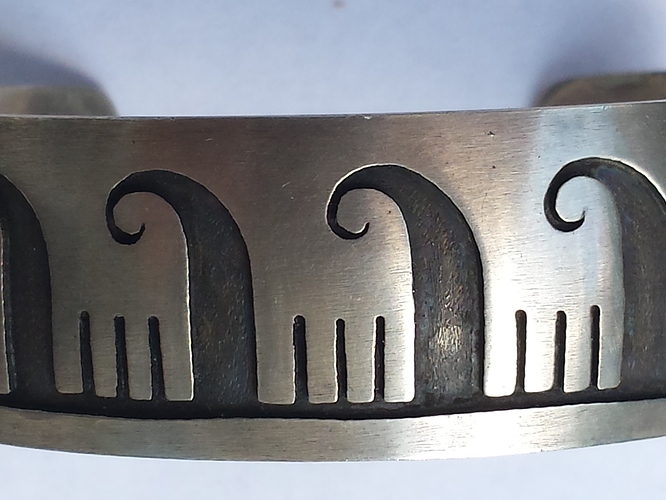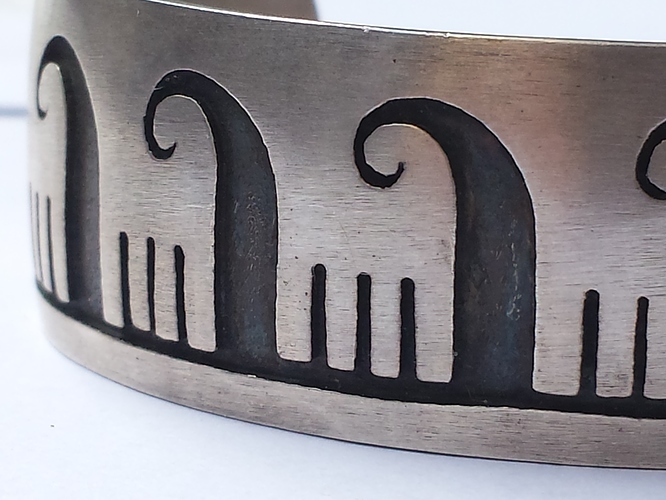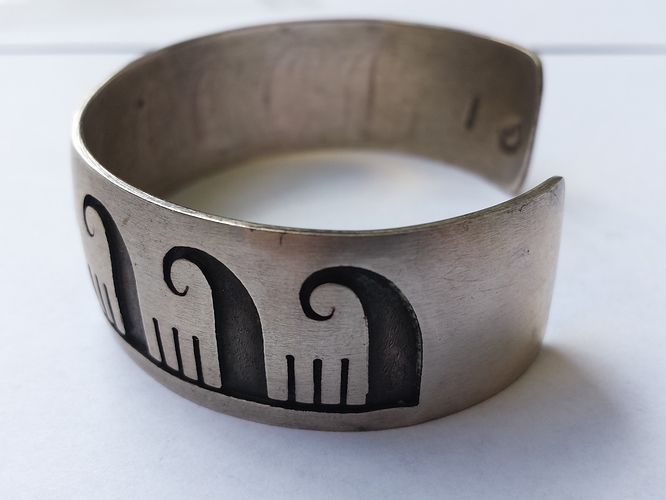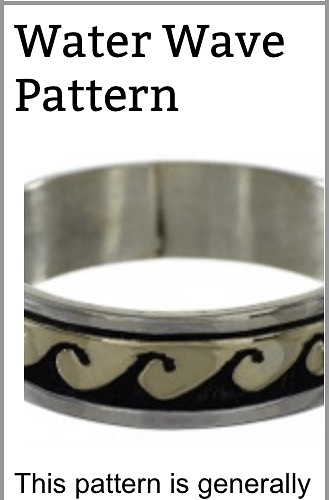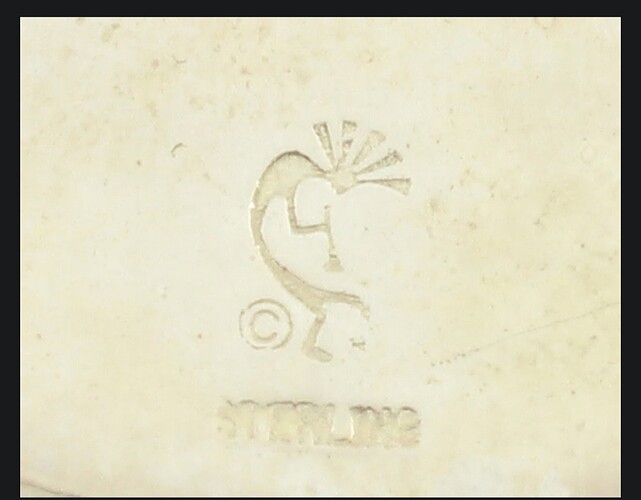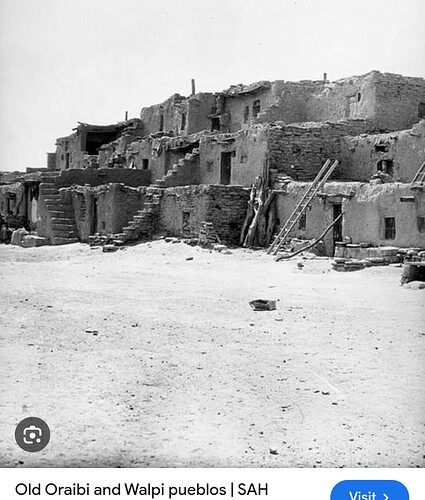This is another bracelet I inherited and know nothing about. I think it is Hopi origin but a can not identify the pictorial hallmark (looks like a porcupine to me). What is the symbolism behind the ornaments? Thanks a lot
Maggie,
This looks to me like an ocean wave design, which I thought was weird because the Hopi reservation in in Arizona, and there are definitely no oceans in Arizona. So maybe someone can else clarify. I found this in regards to the design:
Sorry but I have no information about your hallmark! Hope this was helpful.
Water symbols are used frequently in Hopi designs. No ocean, but water is a symbol of life. Today water is piped in, but not that long ago it was very important for crops and survival. Water and the sun are frequently used because of the importance to Hopi culture and survival.
Thanks Jason. So you think it was made by a Hopi silversmith?
I would assume it is a Hopi piece. I couldn’t find that mark but it is consistent with what a Hopi artist would use.
If you look closely, this silversmith has a different technique for ‘priming’ the oxidized underlying silver. Instead of the more recognizable scratch lines, theirs is more smooth with a slightly speckled in the oxidized area. Just an observation. I would really like to know who this artist is. . . . . .
The lack of scratch lines doesn’t automatically mean it isn’t Hopi. It’s very common in Hopi overlay but not necessary. The scratch marks, I believe, are to mimic the texture of a woven basket.
Sometimes it’s easy to forget that many artists have heritage in more than one community and the origin of a piece isn’t so cut and dry.
This artist is a Navajo Silversmith that does alot of work in this Hopi style. He is a very prolific artist.
He was identified in a different thread. I will try to find it if you havent already seen it. awesome bracelet!
It is a hallmark of Chuck Lindsay, Navajo.
The scratch marks you’re referring to are actually individual stamp lines. Hopi silversmiths often employ a single very small, very fine straight stamp, typically (but not always) a bit wider at one end and narrower at the other to stamp in background texture. This is done one impression at a time with the stampings arranged closely side by side with rows stacked one on top of the other to create the characteristic Hopi texturing effect.
This particular piece is textured with a hand held electric vibratory engraver first introduced commercially in the 70s, and quickly adopted by Native (esp. Navajo) silversmiths to sign or initial works, and for stippled background texturing.
I haven’t ever personally seen a piece of genuine Hopi work which employs a vibratory engraver for background texturing, and when this type of texturing is used it’s usually a pretty strong clue the piece is not Hopi.
ETA: This response was meant for @Jride101, rather than @AZBoots. Apologies for the error.
The hallmark of Chuck Lindsay seems to be a Kokopelli. I do not think this was made by the same Chuck Lindsay. Where did you find your information about the hallmark. Thanks anyway.
I know that most people on here understand Hopi etching, but after reading mmrogers’ description, I more deeply appreciate the teeny tiny etch marks (doggone it, I can never remember the technical name for the marks) on this Hopi cuff of mine.
@Ziacat, the etch marks are beautiful, and I love how on your bracelet they seem to be radiating from the – pile of firewood? – in the sky. Actually I have no idea what that part represents ![]() but either way, those fine etch marks are lovely. They give so much visual interest and texture!
but either way, those fine etch marks are lovely. They give so much visual interest and texture!
I would describe the technique as ‘texture stamping’, or Hopi texture stamping.
I never really noticed that! Yes it’s firewood, and it’s a Pueblo scene. There is a horno (traditional Pueblo oven) to the right, and beyond that (not in the pic) are more buildings. I probably bought that around 1989 while on a trip to Santa Fe with my mom.
This picture is from the Hopi reservation; you can see the resemblance.
I believe the second picture is from Taos Pueblo, but it shows one of the traditional ovens.
So interesting! Thank you for these photos.
Thanks mmrogers, i know my terminology isnt correct.
Wow thats an impressive bracelet
Ziacat, you must have quite a large collection, ive seen you post alot of high quality pieces!
